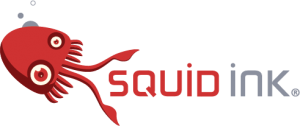We have continued to talk about conversions because they are an easy way to track and understand your target audience. Learning about how they move to your page or how often they visit your page can give you serious insight to your customer base and consumer needs. The first steps for effective conversions is to 1) define your conversion (i.e. pdf download, online purchase, form submission, etc.) and 2) understand how to track the conversions properly. After you have established these two, you can then focus on conversion rate optimization. One of the easiest ways to do that is through your web design.
Web design can be the most useful tool you have on your marketing strategies tool belt. In order to make the most out of your conversions and lead generation, your web design must be implemented as such to easily navigate users to, from, and around the pages you want them to be on. This type of web design specifically focused on conversions is known as Conversion Rate Optimization (CRO). CRO is the “art and science of getting people to act once they arrive on your website,” says Tim Ash, CEO of SiteTuners and author of the book Landing Page Optimization: The Definitive Guide to Testing and Tuning for Conversions. But how do you get people to act on your website, and more importantly, act the way you’d like them to? Well, this involves a combination of strategies and a series of tests. “It typically involves elements of visual design, copywriting, user experience, psychology, testing out different versions of your website content, and the neuromarketing to influence people to act,” says Ash.
Now, it may seem like you need to perform a complete overhaul on your website. Although we aren’t discouraging this strategy if other tactics don’t work, we believe a lot can happen from just small changes to your current site. In fact, Highrise was able to boost their conversion rate 102% just by adding images of people smiling to their website. That’s a pretty impactful number that came from minimal design change.
Below are a few tips for changing or adding to your web design to increase conversion rates:
- Keep forms simple. Shorten your request info form, simplify your checkout page, or streamline a survey. We’re all busy and cutting something from 5 minutes to 3 minutes really can make a huge impact on your number of conversions.
- Stand out. Try changing button colors, locations, or sizes then A/B test to see which button renders more traffic or clicks. We suggest you start small here and not overwhelm your audience, especially if they are used to a button being in a certain place on your website.
- Be straightforward. Your call-to-action should be just that; you need to direct users to exactly the action you’d like them to perform, while also laying out the benefits of performing said action. Be direct about their incentives for viewing a particular page on your website or submitting their email to subscribe to an email.
- Give it time. Make sure you give these changes the proper amount of time to set in so you can track them. We usually say you’ll know whether it was successful or not after a month of running this new campaign or look. If after that isn’t giving you the results you were hoping for, start looking at other strategies to implement.
- Know when to stop. Not every strategy you try will work, and that’s okay. You need to understand when to reevaluate the strategies and try again. Don’t be afraid to take risks with your design changes to enhance conversions, but also evaluate and track them to make sure they’re bringing you the expected or desired results.
Overall, optimizing your conversion rate provides your business with an exact and trackable way to identify what aspects of your web design are or are not working. Utilizing some of the tactics above and conducting tests on your design integrations will make a huge impact on your conversion rate and the success of your website. This insight into the types of colors, CTAs, etc. that attract your clients will only help your other marketing strategies grow and become more successful.
The only way to ensure your campaigns and strategies are the most successful they could be is by partnering with a skilled and experienced team of marketers. Squid Ink Creative is the small digital marketing agency that packs a punch and has the innovation and determination your business needs. We help you find your leads and convert them. So, just how many conversions are you missing out on? Find out by scheduling a meeting with our team today, and don’t forget, it’s free!






